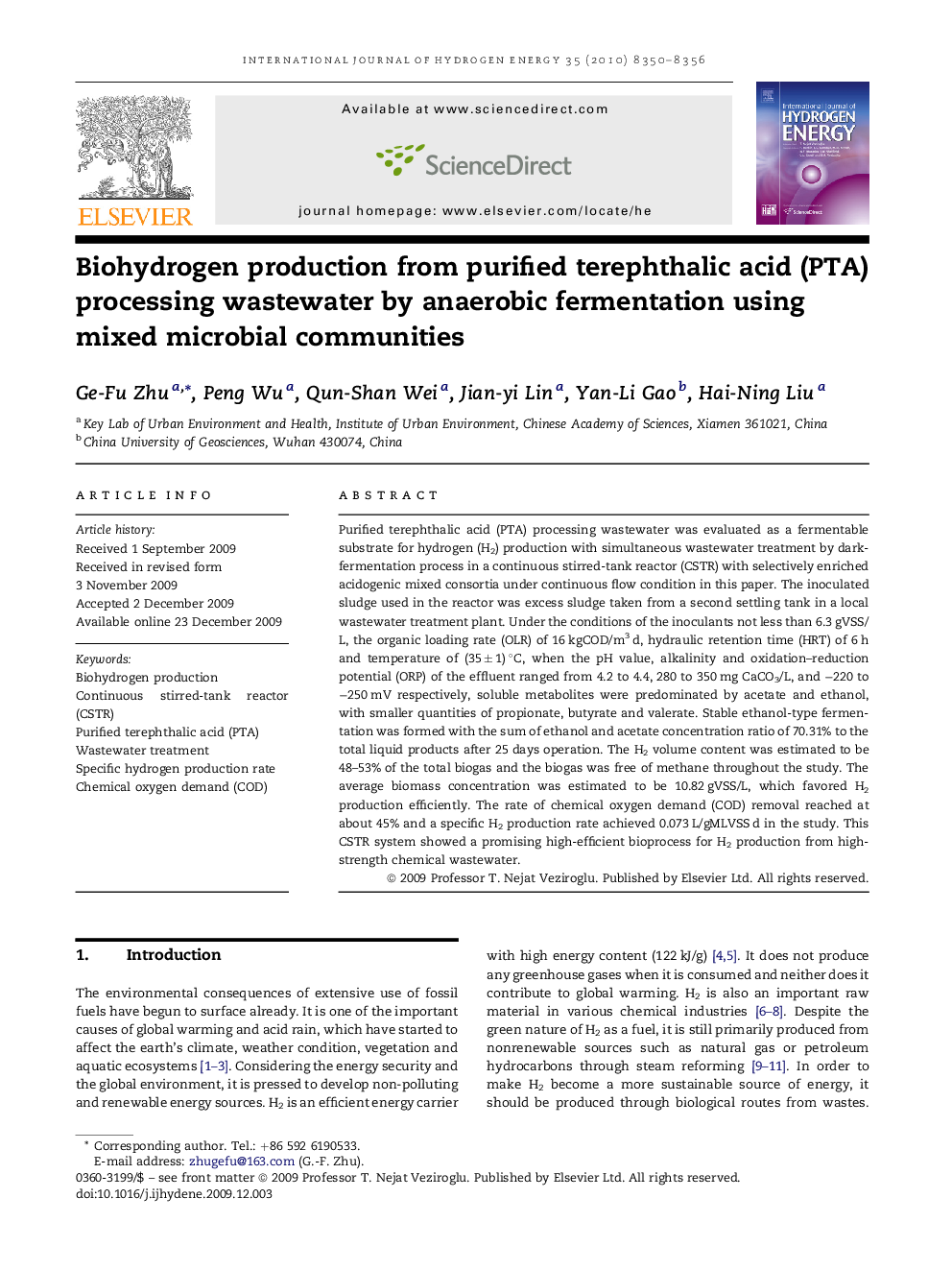| Article ID | Journal | Published Year | Pages | File Type |
|---|---|---|---|---|
| 1278030 | International Journal of Hydrogen Energy | 2010 | 7 Pages |
Purified terephthalic acid (PTA) processing wastewater was evaluated as a fermentable substrate for hydrogen (H2) production with simultaneous wastewater treatment by dark-fermentation process in a continuous stirred-tank reactor (CSTR) with selectively enriched acidogenic mixed consortia under continuous flow condition in this paper. The inoculated sludge used in the reactor was excess sludge taken from a second settling tank in a local wastewater treatment plant. Under the conditions of the inoculants not less than 6.3 gVSS/L, the organic loading rate (OLR) of 16 kgCOD/m3 d, hydraulic retention time (HRT) of 6 h and temperature of (35 ± 1) °C, when the pH value, alkalinity and oxidation–reduction potential (ORP) of the effluent ranged from 4.2 to 4.4, 280 to 350 mg CaCO3/L, and −220 to −250 mV respectively, soluble metabolites were predominated by acetate and ethanol, with smaller quantities of propionate, butyrate and valerate. Stable ethanol-type fermentation was formed with the sum of ethanol and acetate concentration ratio of 70.31% to the total liquid products after 25 days operation. The H2 volume content was estimated to be 48–53% of the total biogas and the biogas was free of methane throughout the study. The average biomass concentration was estimated to be 10.82 gVSS/L, which favored H2 production efficiently. The rate of chemical oxygen demand (COD) removal reached at about 45% and a specific H2 production rate achieved 0.073 L/gMLVSS d in the study. This CSTR system showed a promising high-efficient bioprocess for H2 production from high-strength chemical wastewater.
